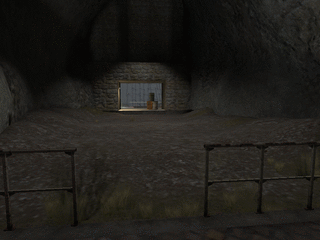env_terrainmorph
Jump to navigation
Jump to search



 AltNames: This entity is also tied to
AltNames: This entity is also tied to
This entity is obsolete. Its use is discouraged. It may only exist/function in older engine branches.
| CTerrainMorph |
env_terrainmorph is a point entity available in all ![]() Source games before
Source games before ![]() Source 2007. It dynamically morphs displacements by pulling vertices along a normal, similar to the Paint Geometry tool in Hammer.
Place this entity the desired distance from a displacement surface and set Angles (manually, with SmartEdit turned off and three angle values in place, e.g. 90 0 0) to the normal along which you want to pull the vertices of the surface.
Source 2007. It dynamically morphs displacements by pulling vertices along a normal, similar to the Paint Geometry tool in Hammer.
Place this entity the desired distance from a displacement surface and set Angles (manually, with SmartEdit turned off and three angle values in place, e.g. 90 0 0) to the normal along which you want to pull the vertices of the surface.
tectonic. Keyvalues
- Name (targetname) <string>
- The name that other entities refer to this entity by, via Inputs/Outputs or other keyvalues (e.g.
parentnameortarget).
Also displayed in Hammer's 2D views and Entity Report. - See also: Generic Keyvalues, Inputs and Outputs available to all entities
- Start Radius (startradius) <integer>
- Radius of the effect when morphing begins. Only this value is used
- Goal Radius (goalradius) <integer>
- Radius of the effect at the end of morphing. The radius of this effect will change from Start Radius to Goal Radius over the duration of this effect. Ignored if the Instant flag is set.
- Duration (duration) <integer>
- The morph will take place over this period of time (seconds). Ignored if the Instant flag is set.
- Displacement Fraction (fraction) <integer>
- If set to
1, the terrain surface will be pulled exactly to this entity's position. If set to0.5, the surface will be pulled exactly half way to this entity's position. If set to2, the surface will be pulled to an imaginary point twice as far away as this entity. (Any fraction value greater than1.0will result in clipping. The surface cannot be pulled beyond this entity's position and any vertices attempting will clip to this entity's position. You may use this feature to create mesas.)
Flags
- Instant : [1]
- If set, the morph will take place instantly instead of over time.
Inputs
- BeginMorph
- Begin terrain morph
